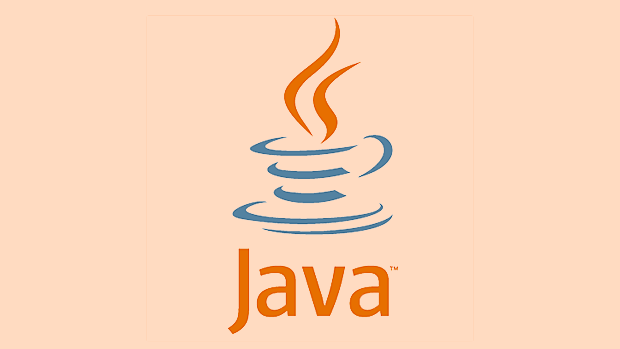The Complete Guide to the Java `Optional` Class
Jul 27, 2025 am 12:22 AMOptional is a container class introduced by Java 8 for more secure handling of potentially null values, with the core purpose of which is to explicitly "missing value" and reduce the risk of NullPointerException. 1. Create an empty instance using Optional.empty(), Optional.of(value) wraps non-null values, and Optional.ofNullable(value) safely wraps the value that may be null. 2. Avoid combining isPresent() and get() directly. You should give priority to using orElse() to provide the default value. OrElseGet() implements delay calculation. This method is recommended when the default value is overhead. OrElseThrow() throws an exception when the value is missing. 3. Use map() to convert values, flatMap() avoids nested Optional, and filter() filters values according to conditions. 4. It is prohibited to use Optional as a method parameter, class field or collection element, and it is prohibited to return null instead of Optional.empty(). 5. You can chain-called filter, map, and flatMap to build a secure data processing process, and use Optional::stream to filter empty values and extract results with Stream. Correct use of Optional can improve code security and readability, making it the preferred return type for expressing "optional results".

Java's Optional class, introduced in Java 8, is a container object that may or may not contain a non-null value. It was designed to help developers handle null values more gracefully and reduce the risk of NullPointerException (NPE). While Optional isn't a solution for every problem, when used correctly, it can make code cleaner, safer, and more expressive.

Here's a complete guide to using Optional effectively in your Java applications.
What Is Optional and Why Use It?
Optional<t></t> is a wrapper for a value that might be absent. Instead of returning null from a method, you can return an Optional<t></t> , making it explicit that the result may be empty.

Why use it?
- Avoids
NullPointerExceptionby design. - Makes APIs clearer — callers know a value might not be present.
- Encourages better handling of missing values instead of ignoring them.
- Promotes functional-style programming with methods like
map,filter, andflatMap.
public Optional<String> findNameById(int id) {
// returns Optional.empty() if not found
return repository.findById(id)
.map(User::getName);
} Creating Optional Instances
There are three main ways to create an Optional :

1. Optional.empty() — For absent values
Use when you know there's no value.
Optional<String> empty = Optional.empty(); // No value
2. Optional.of(value) — For non-null values
Use when you're certain the value is not null. Throws NullPointerException if the value is null.
String name = "Alice"; Optional<String> optName = Optional.of(name); // OK
3. Optional.ofNullable(value) — For values that might be null
Safely wraps a value that could be null.
String name = getNameFromDatabase(); // might return null Optional<String> optName = Optional.ofNullable(name); // OK even if name is null
? Best practice: Use
ofNullable()when dealing with potentially null values.
Checking and Retrieving Values
Once you have an Optional , you need to extract the value safely.
isPresent() and isEmpty() — Check presence
Optional<String> opt = Optional.of("Bob");
if (opt.isPresent()) {
System.out.println("Name: " opt.get());
}Or better (since Java 11):
if (opt.isEmpty()) {
System.out.println("No name found");
}? Don't overuse
isPresent()get()— it defeats the purpose ofOptional.
get() — Get the value (dangerous!)
Only call get() if you're sure the value exists. Otherwise, it throws NoSuchElementException .
String value = opt.get(); // risky!
? Avoid
get()unless you've already checked withisPresent().
orElse(default) — Provide a fallback
Returns the value if present, otherwise returns the default.
String name = opt.orElse("Unknown"); orElseGet(Supplier) — Lazy fallback
Use when computing the default is expensive.
String name = opt.orElseGet(() -> computeDefaultName());
? Prefer
orElseGet()overorElse()when the default involves computing.
orElseThrow() — Throw exception if missing
Great for enforcing presence.
String name = opt.orElseThrow(() -> new IllegalArgumentException("Name is required"));Since Java 10, you can also use:
String name = opt.orElseThrow(); // throws NoSuchElementException
Transforming and Filtering Values
Optional support functional operations to work with the wrapped value without extracting it.
map() — Transform the value
Applies a function if the value is present and returns a new Optional .
Optional<String> nameOpt = getUser().map(User::getName);
If getUser() returns Optional<User> , then map safely extracts and transforms it.
flatMap() — Avoid nested Optional
Use when the transformation returns another Optional .
Optional<String> emailOpt = getUser()
.flatMap(user -> user.getEmail()); // email might be Optional<String> Without flatMap , you'd get Optional<Optional<String>> .
filter() — Conditionally keep the value
Keeps the value only if it matches a predict.
Optional<String> adultName = getPerson()
.filter(p -> p.getAge() >= 18)
.map(Person::getName); If the person is under 18, the result becomes Optional.empty() .
Common Misuses of Optional
Even though Optional is powerful, it's often misused. Here are common pitfalls:
Don't use
Optionalas a method parameter// ? Bad public void setName(Optional<String> name) { ... }Instead, overload the method or use
null.Don't store
Optionalfields in classes// ? Avoid class Person { private Optional<String> middleName; }This complicates serialization and adds unnecessary overhead. Use
nulland document it.Don't call
isPresent()andget()together like a null check// ? Anti-pattern if (opt.isPresent()) { use(opt.get()); }Prefer
ifPresent():opt.ifPresent(this::use);
Don't return
nullfrom methods that returnOptional// ? Never do this return null; // instead of Optional.empty()
Advanced Tips
Chaining operations
You can chain map , filter , and flatMap to build safe pipelines.
String email = userRepo.findById(123)
.filter(User::isActive)
.map(User::getContactInfo)
.flatMap(ContactInfo::getEmail)
.filter(email -> email.endsWith("@company.com"))
.orElse("default@company.com");Use with streams
Optional works well with Stream .
List<Optional<String>> list = ...;
List<String> results = list.stream()
.flatMap(Optional::stream)
.collect(Collectors.toList());This filters out empty optionals and extracts values.
Summary
Optional is a tool for writing safer, more expressive code — not a replacement for all null checks. Use it primarily as a return type to indicate optional results.
Best practices recap:
- ? Use
Optionalas a return type when a value may be absent. - ? Use
orElseGet()instead oforElse()for expensive defaults. - ? Chain
map,flatMap, andfilterfor clean transformations. - ? Avoid
Optionalin fields, parameters, or collections. - ? Never return
nullinstead ofOptional.empty().
When used properly, Optional helps eliminate NullPointerException and makes your code's intent clearer.
Basically, it's not about avoiding null entirely — it's about making absence a first-class concept in your API design.
The above is the detailed content of The Complete Guide to the Java `Optional` Class. For more information, please follow other related articles on the PHP Chinese website!

Hot AI Tools

Undress AI Tool
Undress images for free

Undresser.AI Undress
AI-powered app for creating realistic nude photos

AI Clothes Remover
Online AI tool for removing clothes from photos.

Clothoff.io
AI clothes remover

Video Face Swap
Swap faces in any video effortlessly with our completely free AI face swap tool!

Hot Article

Hot Tools

Notepad++7.3.1
Easy-to-use and free code editor

SublimeText3 Chinese version
Chinese version, very easy to use

Zend Studio 13.0.1
Powerful PHP integrated development environment

Dreamweaver CS6
Visual web development tools

SublimeText3 Mac version
God-level code editing software (SublimeText3)
 VSCode settings.json location
Aug 01, 2025 am 06:12 AM
VSCode settings.json location
Aug 01, 2025 am 06:12 AM
The settings.json file is located in the user-level or workspace-level path and is used to customize VSCode settings. 1. User-level path: Windows is C:\Users\\AppData\Roaming\Code\User\settings.json, macOS is /Users//Library/ApplicationSupport/Code/User/settings.json, Linux is /home//.config/Code/User/settings.json; 2. Workspace-level path: .vscode/settings in the project root directory
 How to handle transactions in Java with JDBC?
Aug 02, 2025 pm 12:29 PM
How to handle transactions in Java with JDBC?
Aug 02, 2025 pm 12:29 PM
To correctly handle JDBC transactions, you must first turn off the automatic commit mode, then perform multiple operations, and finally commit or rollback according to the results; 1. Call conn.setAutoCommit(false) to start the transaction; 2. Execute multiple SQL operations, such as INSERT and UPDATE; 3. Call conn.commit() if all operations are successful, and call conn.rollback() if an exception occurs to ensure data consistency; at the same time, try-with-resources should be used to manage resources, properly handle exceptions and close connections to avoid connection leakage; in addition, it is recommended to use connection pools and set save points to achieve partial rollback, and keep transactions as short as possible to improve performance.
 Mastering Dependency Injection in Java with Spring and Guice
Aug 01, 2025 am 05:53 AM
Mastering Dependency Injection in Java with Spring and Guice
Aug 01, 2025 am 05:53 AM
DependencyInjection(DI)isadesignpatternwhereobjectsreceivedependenciesexternally,promotingloosecouplingandeasiertestingthroughconstructor,setter,orfieldinjection.2.SpringFrameworkusesannotationslike@Component,@Service,and@AutowiredwithJava-basedconfi
 python itertools combinations example
Jul 31, 2025 am 09:53 AM
python itertools combinations example
Jul 31, 2025 am 09:53 AM
itertools.combinations is used to generate all non-repetitive combinations (order irrelevant) that selects a specified number of elements from the iterable object. Its usage includes: 1. Select 2 element combinations from the list, such as ('A','B'), ('A','C'), etc., to avoid repeated order; 2. Take 3 character combinations of strings, such as "abc" and "abd", which are suitable for subsequence generation; 3. Find the combinations where the sum of two numbers is equal to the target value, such as 1 5=6, simplify the double loop logic; the difference between combinations and arrangement lies in whether the order is important, combinations regard AB and BA as the same, while permutations are regarded as different;
 Troubleshooting Common Java `OutOfMemoryError` Scenarios
Jul 31, 2025 am 09:07 AM
Troubleshooting Common Java `OutOfMemoryError` Scenarios
Jul 31, 2025 am 09:07 AM
java.lang.OutOfMemoryError: Javaheapspace indicates insufficient heap memory, and needs to check the processing of large objects, memory leaks and heap settings, and locate and optimize the code through the heap dump analysis tool; 2. Metaspace errors are common in dynamic class generation or hot deployment due to excessive class metadata, and MaxMetaspaceSize should be restricted and class loading should be optimized; 3. Unabletocreatenewnativethread due to exhausting system thread resources, it is necessary to check the number of threads, use thread pools, and adjust the stack size; 4. GCoverheadlimitexceeded means that GC is frequent but has less recycling, and GC logs should be analyzed and optimized.
 python pytest fixture example
Jul 31, 2025 am 09:35 AM
python pytest fixture example
Jul 31, 2025 am 09:35 AM
fixture is a function used to provide preset environment or data for tests. 1. Use the @pytest.fixture decorator to define fixture; 2. Inject fixture in parameter form in the test function; 3. Execute setup before yield, and then teardown; 4. Control scope through scope parameters, such as function, module, etc.; 5. Place the shared fixture in conftest.py to achieve cross-file sharing, thereby improving the maintainability and reusability of tests.
 Understanding the Java Virtual Machine (JVM) Internals
Aug 01, 2025 am 06:31 AM
Understanding the Java Virtual Machine (JVM) Internals
Aug 01, 2025 am 06:31 AM
TheJVMenablesJava’s"writeonce,runanywhere"capabilitybyexecutingbytecodethroughfourmaincomponents:1.TheClassLoaderSubsystemloads,links,andinitializes.classfilesusingbootstrap,extension,andapplicationclassloaders,ensuringsecureandlazyclassloa
 How to work with Calendar in Java?
Aug 02, 2025 am 02:38 AM
How to work with Calendar in Java?
Aug 02, 2025 am 02:38 AM
Use classes in the java.time package to replace the old Date and Calendar classes; 2. Get the current date and time through LocalDate, LocalDateTime and LocalTime; 3. Create a specific date and time using the of() method; 4. Use the plus/minus method to immutably increase and decrease the time; 5. Use ZonedDateTime and ZoneId to process the time zone; 6. Format and parse date strings through DateTimeFormatter; 7. Use Instant to be compatible with the old date types when necessary; date processing in modern Java should give priority to using java.timeAPI, which provides clear, immutable and linear






